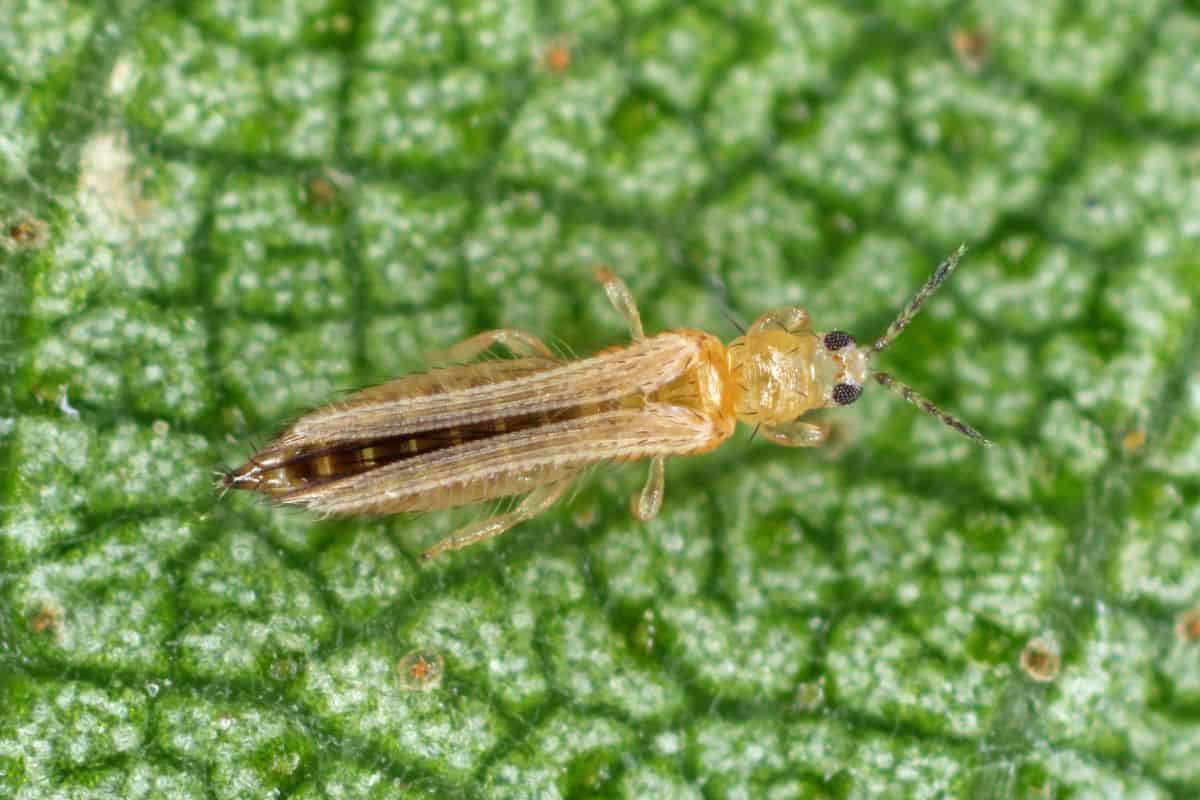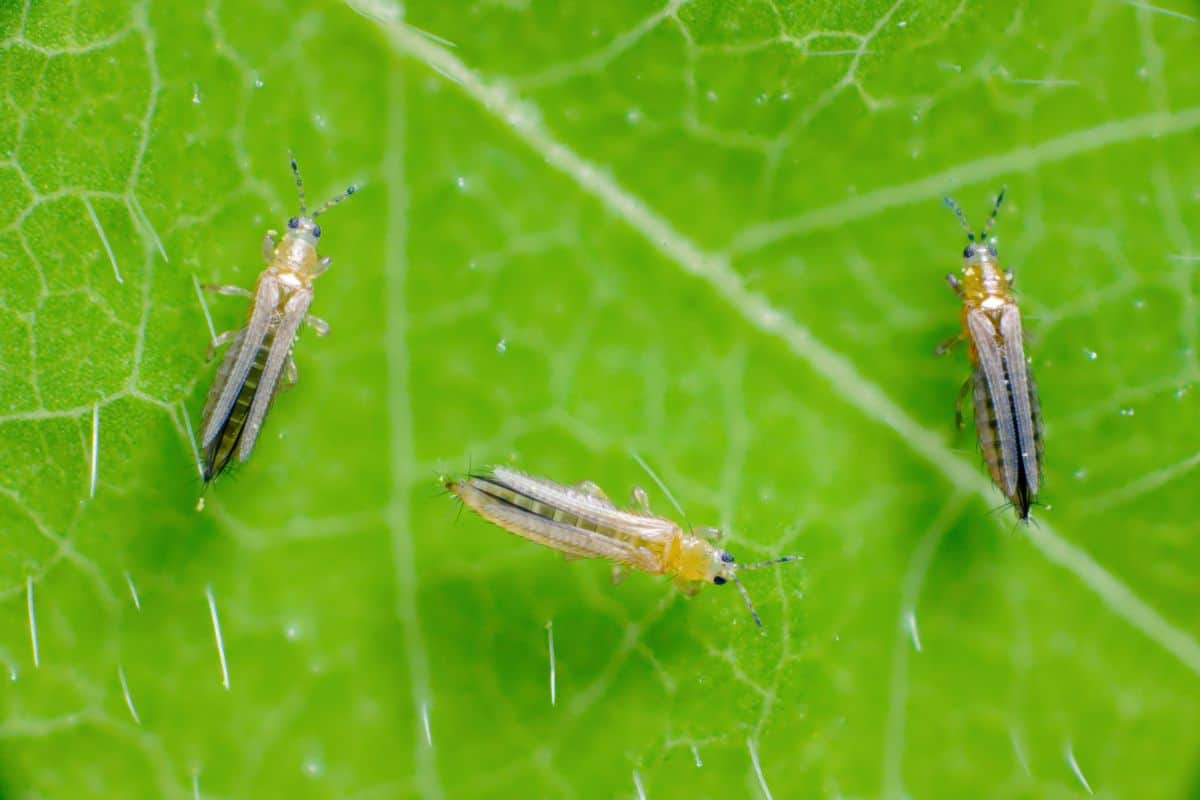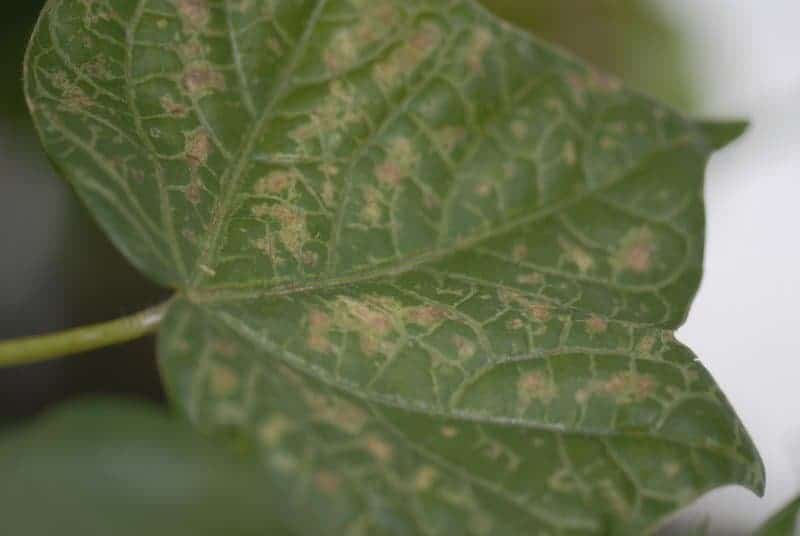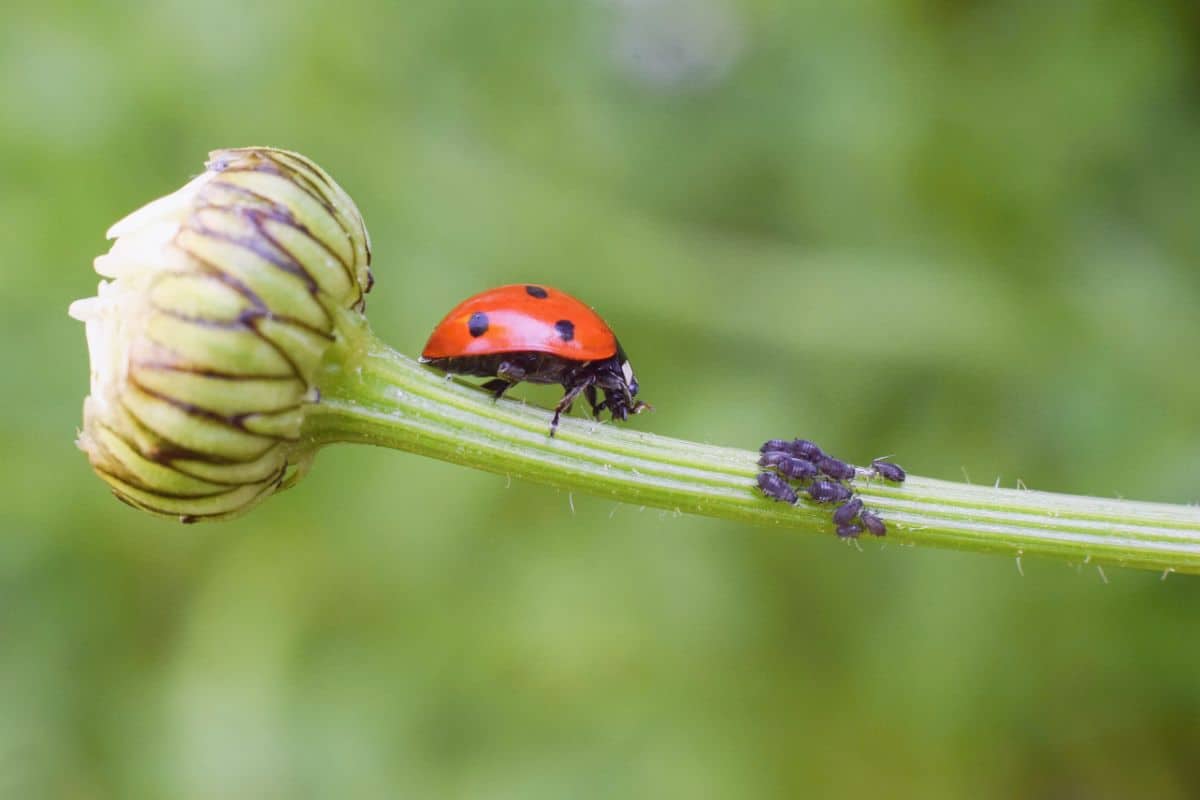Thrips are very small, usually winged, insects that are notorious pests the world over.

You can easily recognize them by their long, cigar-shaped bodies. Well, “long” is relative - most thrips barely measure 1mm! They’re quite difficult to see with the naked eye unless you know what you’re looking for.
If you manage to spy a bug you suspect is a thrip, you can confirm by looking closely at their wings. They have unique fringed wings that are adapted for a very particular style of movement.
A few kinds of thrips, the largest ones, are actually beneficial. They prey on other pests, guarding your garden. Others are important pollinators. The vast majority, unfortunately, are a serious problem (especially for commercial crops). They’d like nothing more than to suck the juice out of all your succulents.
Read Related Article: How to Graft Cacti
Jump to:
Pest Summary

Thrips are incredible survivors and it’s evident when you examine their lifecycle.
Many species of thrip are parthenogenic. That means they can reproduce without mating. Some can also mate one time and lay several batches of eggs throughout their (admittedly short) lifetime.
If you thought the insect was tiny, the eggs are minuscule! Most are less than 0.2mm, meaning you’ll likely never see them. Some species of thrip cut a slit in a leaf to lay eggs, which eventually forms a gall.
The eggs only take a week or two to hatch. The larva will go through one or two metamorphoses (like a caterpillar turning into a cocoon). The larval stage is relatively short too – it only takes a couple weeks for a thrip to become an adult.
The adult will then run around for a month or two, laying eggs and ruining gardens – generally being a nuisance. They are short-lived, but their sheer numbers can cause a lot of damage.
Note that thrip adults, eggs, and pupae can all survive a winter by hiding in the soil. That’s the reason early spring infestations can seem so sudden and severe.
Read Also: DON'T Make a Succulent Terrarium. Here's Why.
Signs of a Thrips Infestation

If you’ve ever brushed by a leaf and seen a small cloud of insects rise up, those were probably thrips.
Because they are such small insects, though, it's common for many gardeners to miss them until the damage is already done.
Constant vigilance and daily look-overs of your plants will help you catch it early, though!
No products found.
Check the leaves first. Look for black, silver, or brown discoloration. They may reveal patterns of lines and rings, or simply meandering trails of dead tissue.
The stems and veins may have black or silver streaks. Expect to see necrotic lesions and dead spots, as well. The leaves might become dry and papery. Blossoms and flowers could be discolored.
In general, the plant will unwell and unhappy. Sad 🙁
Read Related Topics:
Getting Rid of Thrips
Thrips are tenacious pests, but generally fragile. Until recently, that is.
The widespread use of pesticides in the United States and elsewhere has slowly been breeding resistance in thrips. Some of them are immune to all but the harshest pesticides. Definitely not the kind of thing you want in your garden and around your family.
The good news is that there are several methods for getting rid of thrips that are safe!
Insecticidal Soap

There are lots of options for insecticidal soap. They are all safe for people, pets, and pretty much anything that isn’t a bug. Insecticidal soap is particularly effective against thrips.
The thing about insecticidal soap is that it only works when it's wet. That means you'll have to apply it every day until the pest problem is gone.
Some are oil-based, so be careful when applying it. Oil sitting on leaves can lead to sunburns. Apply it in the evening and let it sit overnight.
If you're impatient (or frugal) you can even make insecticidal soap yourself! It's as simple as mixing a teaspoon of real soap (not a detergent like dishwashing soap) into a quart of water. Mix it up, throw it in a spray bottle, and bam - you've got chemical warfare at your fingertips!
Neem Oil

Neem oil is the secret weapon of gardeners. It's sometimes held up as a panacea, a natural cure-all, but other times it's viewed as impotent or even harmful.
If you've never tried it before, it's definitely worth a shot.
Neem oil is, obviously, an oil. Take the same precautions you do with insecticidal soap - apply at night. Be sure to follow the directions on the packaging. You usually have to significantly dilute neem or you risk damage to your plants.
Unlike the soap, neem oil doesn't harm beneficial bees so you can rest assured the collateral damage is minimal.
Predators

Introducing predators that dine on thrips is another way to nip the issue in the bud.
A number of mites are happy to feed on the insects, but you might not want those in your home. How about ladybugs or lady beetles? You can actually buy those on Amazon and release them in your garden. Buying bugs online... weird, right?
Lacewings and parasitic wasps also eat thrips but again, you might not want to have wasps in or around the house.
Be Proactive and Prevent Thrips from Infesting Your Succulents
The way you care for your succulents or succulent garden can guard against thrips more successfully than any other method. As they say, an ounce of prevention is worth a pound of cure!
Thrips thrive in moist environments. Proper irrigation is a must if you want to keep them away, but as a cacti fan, you're already on top of that.
Avoid too many applications of fertilizer and get rid of plant waste right away. If any of the buds, leaves, or plants become infested, prune them as quickly as you can.
Reflective mulch can keep thrips at bay, too. You can use it on indoor or outdoor plants.
You're not in grave trouble just because thrips appear. Be sure to treat the problem immediately and infestations can be prevented.
Do your due diligence and pay attention to any changes in the appearance of your plants. Check them out daily!

